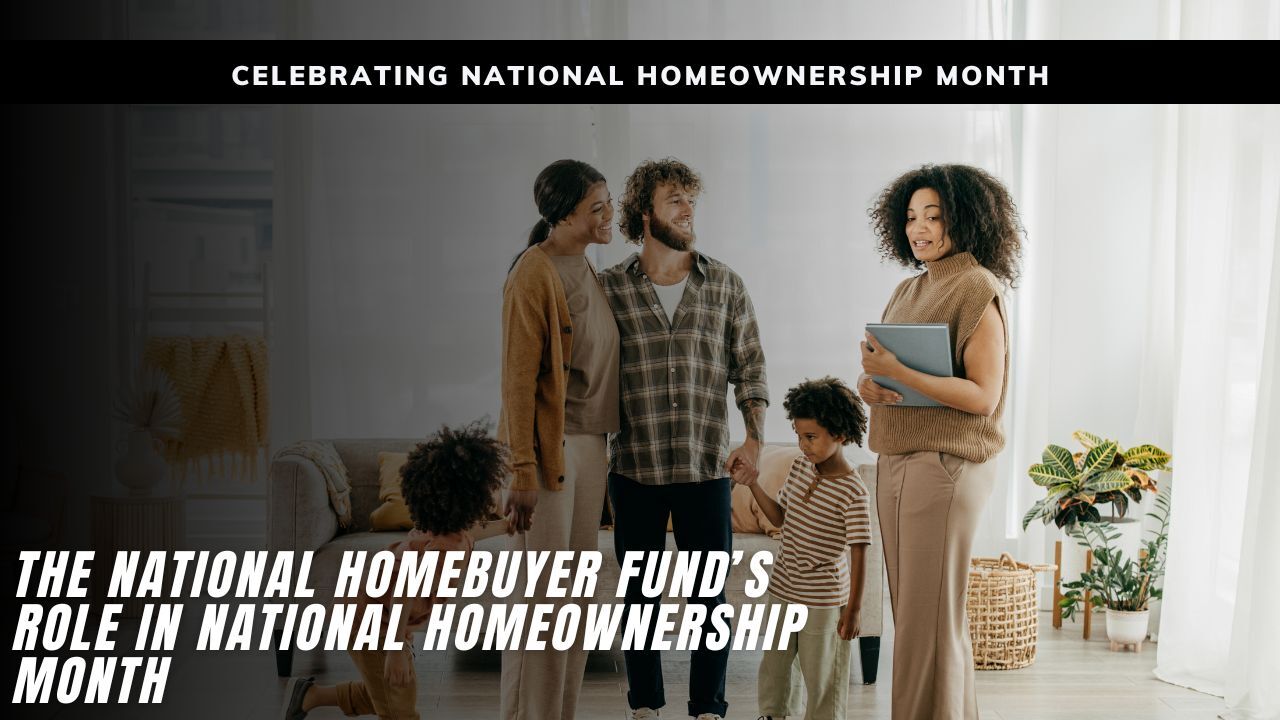 June is National Homeownership Month, a special time to celebrate the dream of owning a home and highlight programs that help make homeownership more attainable. One standout resource for many aspiring homeowners is the National Homebuyer Fund (NHF), an organization dedicated to providing vital financial assistance to low-to-moderate income families striving to buy their first home.
June is National Homeownership Month, a special time to celebrate the dream of owning a home and highlight programs that help make homeownership more attainable. One standout resource for many aspiring homeowners is the National Homebuyer Fund (NHF), an organization dedicated to providing vital financial assistance to low-to-moderate income families striving to buy their first home.
What Is the National Homebuyer Fund?
The NHF is a nonprofit that offers down payment and closing cost assistance to qualified homebuyers. This support often comes in the form of grants or forgivable loans, meaning that recipients may not have to repay the funds if they meet program requirements, making the dream of homeownership more affordable and achievable.
NHF’s assistance programs are typically paired with government-backed loans such as FHA, VA, and USDA loans, which themselves are designed to lower barriers for buyers who might not qualify for conventional mortgages. By combining these programs, the NHF helps bridge the financial gap that often prevents many families from making the leap to homeownership.
Why NHF Is Essential for Aspiring Homeowners
One of the biggest obstacles to buying a home is coming up with the upfront costs—particularly the down payment and closing costs. Even with low-interest rates, these initial expenses can be a significant hurdle. The NHF’s assistance programs directly target this challenge by providing funds that reduce the amount buyers need to bring to the table at closing.
Moreover, the NHF places a strong emphasis on helping first-time buyers and families who otherwise might be overlooked by traditional lending practices. By easing the financial burden, the fund empowers these buyers to build stability, equity, and wealth through homeownership.
Aligning with National Homeownership Month
National Homeownership Month is about more than celebrating—it’s about creating opportunities and removing barriers. The National Homebuyer Fund fits perfectly into this mission. As housing affordability continues to be a pressing issue in many communities, NHF’s support ensures that the path to owning a home is accessible to more families.
Programs like NHF remind us that homeownership is a powerful tool for economic security and community strength. They also highlight the importance of targeted assistance and education to help buyers make informed decisions and succeed long term.
How You Can Benefit or Help Spread the Word
If you’re a prospective buyer, learning about the NHF and how it partners with various loan programs can be a game-changer. Real estate professionals and lenders can also play a crucial role by informing clients about NHF’s resources, helping them apply, and connecting them with homebuyer education programs.
During this month, consider sharing information about the NHF with your network. Whether you’re a buyer, an agent, or a community advocate, spreading awareness can help unlock homeownership for more families.
 June is National Homeownership Month, a time dedicated to celebrating the American dream of homeownership and spotlighting the tools and resources that help make that dream a reality. For millions of aspiring homeowners, especially those with modest incomes, programs like Fannie Mae’s HomeReady® and Freddie Mac’s Home Possible® provide a critical pathway forward.
June is National Homeownership Month, a time dedicated to celebrating the American dream of homeownership and spotlighting the tools and resources that help make that dream a reality. For millions of aspiring homeowners, especially those with modest incomes, programs like Fannie Mae’s HomeReady® and Freddie Mac’s Home Possible® provide a critical pathway forward. June is National Homeownership Month, it is a time to celebrate the American dream of owning a home and to reflect on what homeownership means to individuals, families, and communities. I believe in the power of homeownership to build stability, create generational wealth, and provide a true sense of belonging. Whether you are already a homeowner or still working toward that goal, this month is dedicated to you.
June is National Homeownership Month, it is a time to celebrate the American dream of owning a home and to reflect on what homeownership means to individuals, families, and communities. I believe in the power of homeownership to build stability, create generational wealth, and provide a true sense of belonging. Whether you are already a homeowner or still working toward that goal, this month is dedicated to you. When you are buying a home, you are likely thinking about how it fits your life. Is the kitchen big enough? Does it have a home office? Is the backyard right for pets or kids? But what if I told you that thinking like a seller can make you a smarter buyer?
When you are buying a home, you are likely thinking about how it fits your life. Is the kitchen big enough? Does it have a home office? Is the backyard right for pets or kids? But what if I told you that thinking like a seller can make you a smarter buyer? When you are scrolling through homes online, it’s easy to get swept away by beautiful photos, catchy descriptions, and enticing phrases like “charming fixer-upper” or “cozy starter home.” But as a real estate agent, let me tell you, there is often more to the story than meets the eye. Learning to read between the lines of a real estate listing can save you time, prevent disappointment, and help you find the right home faster.
When you are scrolling through homes online, it’s easy to get swept away by beautiful photos, catchy descriptions, and enticing phrases like “charming fixer-upper” or “cozy starter home.” But as a real estate agent, let me tell you, there is often more to the story than meets the eye. Learning to read between the lines of a real estate listing can save you time, prevent disappointment, and help you find the right home faster. If you are struggling to make your mortgage payments and facing the possibility of foreclosure, you’re not alone and you are not out of options. One path worth considering is a short sale, which can help you avoid the long-term impact of a foreclosure on your credit report.
If you are struggling to make your mortgage payments and facing the possibility of foreclosure, you’re not alone and you are not out of options. One path worth considering is a short sale, which can help you avoid the long-term impact of a foreclosure on your credit report.